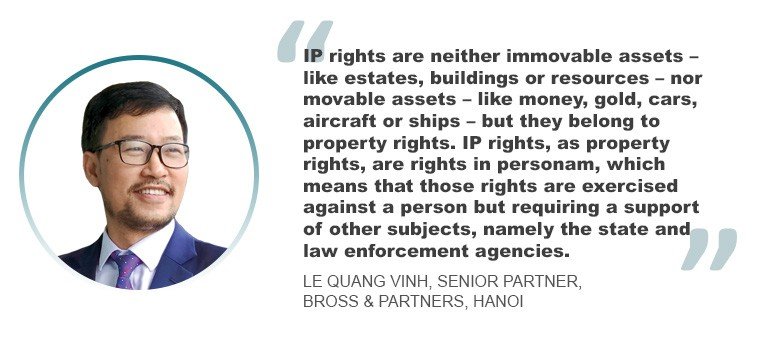Preventing high turnover and the significant loss of IP
30 April 2022

In the past two years, the Covid-19 pandemic has brought on a new way of working. As the pandemic begins to fade in many parts of the world, management is increasingly calling staff back to the office, making expensive and lengthy commutes not only a thing of the past, but also of the future.
While management may believe their employees are not working hard enough while happily ensconced at home, the labour side might lament the blurring of the lines between their work and personal lives. With the internet being available to all, there may be an expectation that an employee must always be accessible. On the other hand, the employee may prefer to set boundaries and establish a healthy work-life balance. Failing at this, he or she may be forced to leave this less-than-ideal situation and find work with fewer demands. At the same time, members of the Baby Boom generation are retiring at an unprecedented pace, creating new opportunities for Generation X and Millennial workers, who might feel the need to move on in order to move up.
With such a high turnover at stake, the business or the brand may experience a significant loss of IP.

“A strong brand may not be immediately affected when a company loses its people,” says Divina Pedron, a senior partner at Cruz Marcelo & Tenefrancia in Manila. “However, when key employees in charge of ensuring the quality of the goods or services leave, it is possible for the quality of the goods or services to suffer. When this happens, brand image or goodwill may be diminished and this will reflect on the company’s sales performance.”
She adds: “On the other hand, employees that are left behind in the company may feel a desire to also leave, for fear that their responsibilities will be increased with the exodus of their co-workers. It is thus important for the company to immediately put up measures to protect their staff who have stayed on, and prevent more of its people from leaving.”
With IP rights as the private assets (which afforded legal protection) existing in the form of a utility patent, design patent or trademark registration, IP rights may be easily lost due to their nature of intangibility and territoriality.
“IP rights are neither immovable assets – like estates, buildings or resources – nor movable assets – like money, gold, cars, aircraft or ships – but they belong to property rights,” says Le Quang Vinh, a senior partner at Bross & Partners in Hanoi. “While immovable assets and movable assets feature the rights in rem, meaning those rights are exercised directly on a tangible thing without the support of another person, IP rights, as property rights, are rights in person, which means that those rights are exercised against a person but requiring a support of other subjects, namely the state and law enforcement agencies.”
Vinh adds that the loss of intellectual property is a serious problem, as it can affect an entire economic sector or even a country.
“Generally speaking, there are three consequences of the loss of intellectual property: (1) loss of intellectual property assets means loss of markets and the loss of opportunities to expand markets in order to increase revenue; (2) losing intellectual property also means that enterprises must face the risk of lawsuits, litigation, customs clearance suspension at the importing countries’ border, damage payment by court’s order; and (3) the benefits earnable from the free trade agreements [and other trading opportunities],” he says.

Preventing loss of IP
In preventing the significant loss of intellectual property, Vinh gives some tips and pointers.
-
Submit requests for registration of trademarks, designs and inventions as soon as possible in not only domestic markets but also in foreign countries where your business has been exporting or will be probably selling your product.
-
Periodically watch IP gazettes to promptly discover whether innovations, industrial designs or trademarks similar to yours have been filed, published or registered by competitors.
-
Immediately consult and hire qualified IP attorneys to prepare and lodge requests for opposition, cancellation, invalidation before the patent and trademark office or competent court of the concerned country.
-
Periodically watch competitors’ business activities in the marketplace to identity whether their sale, offer for sale, or advertisement relating to their products bearing brand names or outer appearance is copycatted or likely to cause any confusion as to source of trade. If yes, you should choose suitable legal remedies to prevent those infringements.
-
It is advisable for you to regularly go over your IP portfolio to maintain strong IP rights and reinforce weak or thin IP rights. In some special markets, like China, you should file independent applications for registration of variant versions of your trademarks at different points of time, and additionally file Chinese transliterated versions of your trademark to combat bad faith filing.
“IP disputes, IP infringement and IP litigation are expensive and time-consuming,” says Vinh. “However, as long as you are proactive in quickly registering IP rights as well as collecting and preserving relevant substantiated evidence, you will probably prevail.”
In terms of business owners and brands, Pedron adds, “Regardless of what is happening in the work organization, brand owners must insulate their IP or brand and ensure that its image is preserved. Forward staffing and succession planning must be considered to avoid the possibility of brain drain.
Excel Dyquiangco






